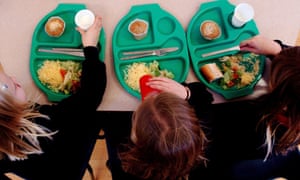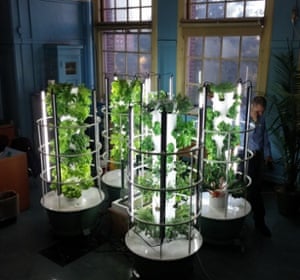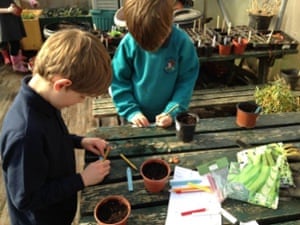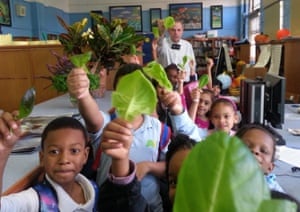
There it sits in pride of place on every mantelpiece: the perennial snapshot of a nervous 11-year-old in an oversized uniform, smiling for the camera but not quite ready for their first day at secondary school.
It’s a huge responsibility for primary and secondary teachers, who must make sure the transition is as smooth as possible. As an assistant head in a secondary school and lead on transition, I’ve seen a lot of students go through it. So, as the new school year approaches and with many primary teachers getting their young charges ready for the next step, here are a few reflections on what works well:
Make contact with secondary schools
It is likely that all children will have heard from their respective secondary schools, but if not, primary and secondary teachers can make initial contact. At my school, all our new year 6 children join us for the last week of term for lessons, activities, assemblies and trips. The time we spend with them is invaluable, and any little niggles, such as being placed in a tutor group away from their friends, can be dealt with immediately.
There are other, less intensive, ways of giving primary students a flavour of what secondary school will be like. For example, year 6 primary teachers could invite ex-pupils back to give a talk or offer a Q&A session to current classes. Younger students could write letters or postcards to children in year 7, asking questions about what comes next for them. This makes a good literacy activity and can also give teachers an insight into the fears and worries of new starters.
Share information
From the perspective of the secondary school teacher, we want to know as much as possible about the new children – warts and all. The teachers doing liaison work – the head of year 7, for example – wouldn’t share this information with subject teachers but it would be known among the pastoral team. For example, we want to know about the child with a tendency to throw chairs and the ones who only eat Ready Brek or chocolate-spread sandwiches.
Pupil passports, in which the year 6 students record their thoughts, feelings and ambitions, are another less work-intensive technique. These can be sent to the new secondary school, making it a handy literacy exercise and useful preparation for secondary teachers to see the kinds of issues they’re likely to face.We host year 6 students at our sports day, where they have their own events and win points for what will be their house. Seeing children at sports day shows us a bit more about their characters – are they sitting back rather than getting involved? It’s a different kind of environment to that of the classroom, and how they react says a lot about their confidence levels.
Alleviate fears
Year 6 students are always worried about the same things: bullying, getting lost, where the toilets are and how to buy lunch. The much wider variety of staff is a real change from primary. Talking to the children about the different roles of secondary teachers will help them feel confident about knowing who to approach with questions. Nearly always there will be one particular person, such as the head of year 7 or another pastoral leader, to whom they can bring their initial worries. It’s also helpful for staff: sometimes the principal is a bit surprised to be asked about how to work the library system.
Of course, every year there are children whose fears are not allayed. Tell-tale signs might be frequent tears, increased introversion, clinging behaviour to members of primary school staff, frequent absenteeism or an increase in challenging behaviour. If children start showing these signs, it’s essential the two transitional teachers share this. It might be that it’s not too late to start more activities – such as lunches in the canteen hosted by the school, additional tours of the school and mini-lessons.
Teach resilience
Building the confidence of primary school children before they leave is of utmost importance: children with high self-esteem are better able to make difficult decisions under peer pressure, approach adults for support, and be self-sufficient in their learning. Primary schools develop this resilience through many activities that are traditional for year 6 students: showing visitors around their school, being part of the student council or parliament, and performing or having some other responsible role in a school production. Activities in class and homework projects that need to be completed independently can help prepare children for the new world of homework timetables and detentions for not meeting deadlines. Many primary schools organise a residential trip for year 6 pupils where they develop their sense of adventure and increase their self-sufficiency by being away from home and taking part in new and unfamiliar activities. These transferable skills will stand them in good stead as they move off into the unfamiliar world of secondary education.
Don’t panic
On the first morning of the first day at secondary school, we can guarantee someone will cry. Someone will not be able to tie their tie. Someone will have lost their money. Someone will do something silly, like calling the principal “mate”. Lots will refer to the male teachers as “Miss” because they have never known a “Sir” before. But throughout that day and that week, gradually, they will find their feet, drawing on the resilience they have developed through their primary school years. One of the most powerful things a year 6 teacher can do is to pop in and say “hi” to their former pupils after a couple of weeks. I guarantee they will all look so much older and wiser.
Vicky Horne is assistant head of school intervention and inclusion at Castle Manor Academy.
Source: http://www.theguardian.com/teacher-network/2015/jul/01/five-useful-ways-teachers-pupils-transition-secondary-school







